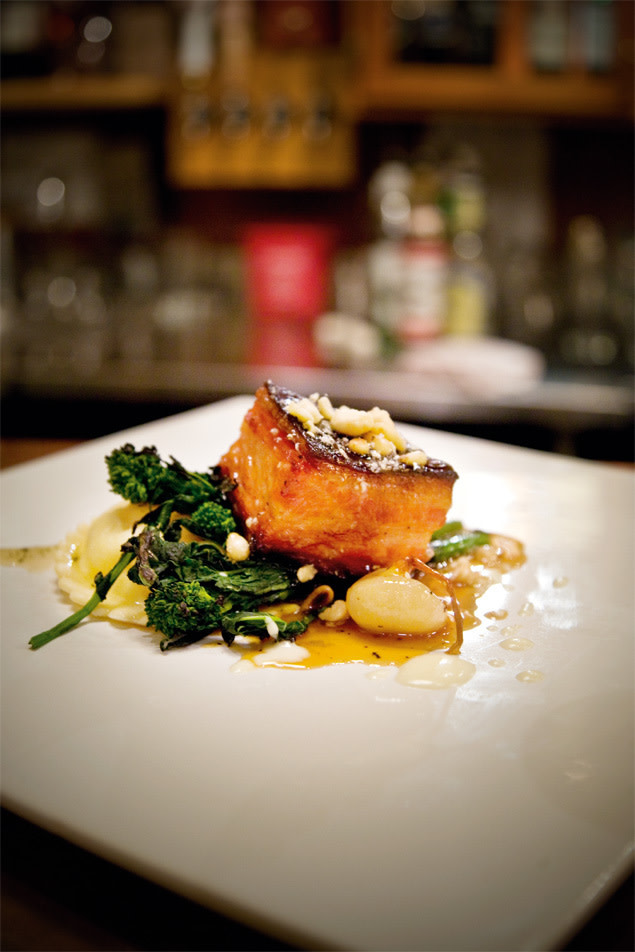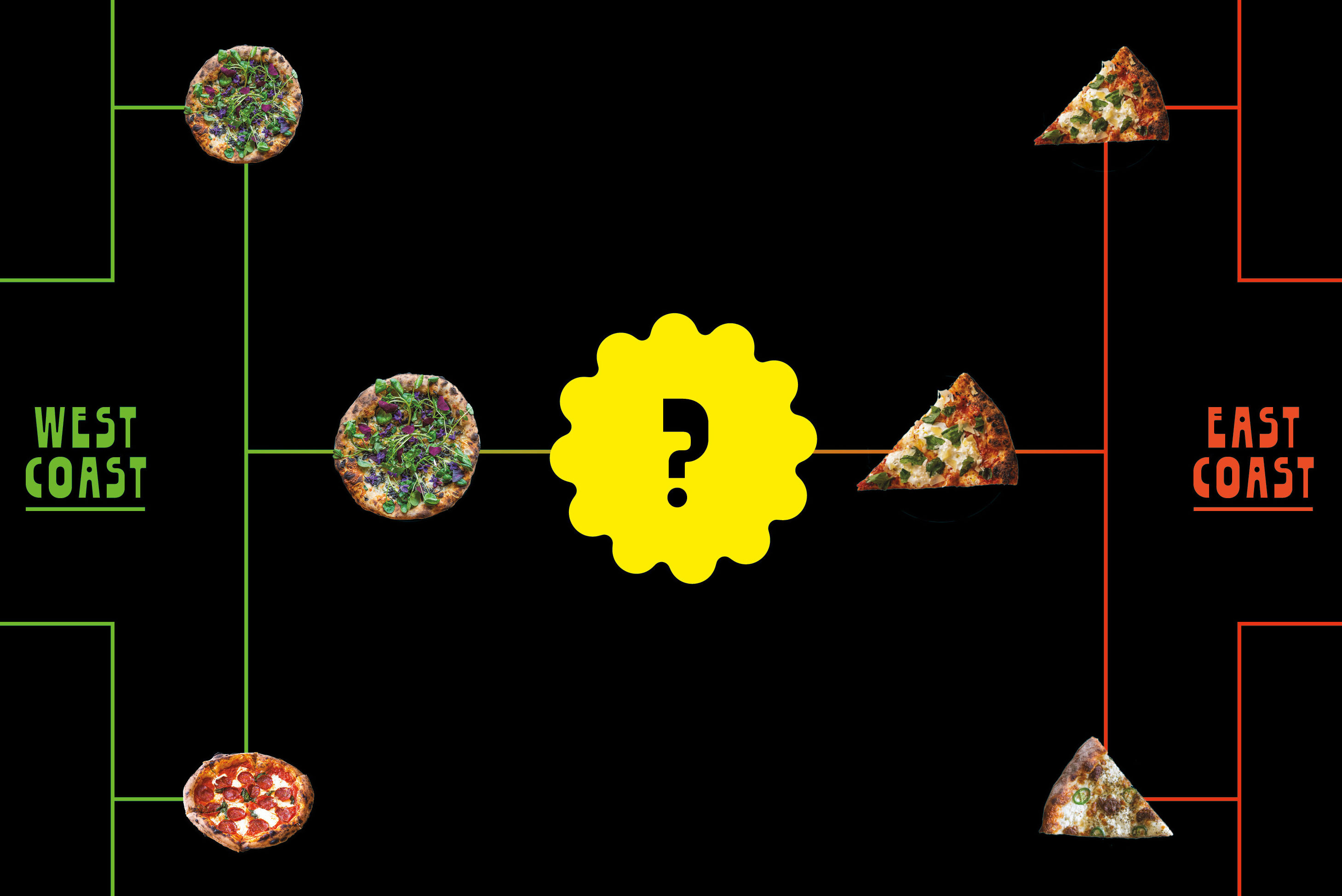Rowdy Rustic

IT MIGHT HAVE BEEN mere coincidence that, on the first few nights I dined at A Cena, it seemed as though at least half of the customers knew one another. On the first evening, some 15 gentlemen and ladies who looked to be well into their 70s, all of them dressed to the nines, gathered around several tables in one of the restaurant’s two connected dining rooms. The engaged looks on their faces and their thoughtful, stimulating conversations enlivened what was, just minutes previously, a subdued and hushed atmosphere. On another visit, nearly all of the tables had been pushed together to accommodate parties of 10 or more, and the only table of four requested to have a chair added to it every five minutes—their growing entourage laughing and exclaiming with friendly bravado at each new arrival. One particularly rainy night, I saw a table of two lean over to chat amicably with a table of one—a gesture that broke the invisible barrier that normally exists between
strangers eating out.
I’m not used to this sort of dining behavior in Portland. This is a city where most restaurant customers dine early (usually in sober pairs), keep to themselves, eat quickly (even timidly) and make it home by 7. Yet at A Cena, housed in the old Assaggio space in Sellwood, I was reminded of diners in Italy—where a certain entitled, but entirely charming, “this is our restaurant” air prevails. This is especially true in small countryside osterias whose owners encourage customers to engage in loud conversation, linger over bottles of wine and pound their fists on the table.
But it’s unclear whether that’s what the owners have in mind. The candles, napkin rings and dark, earth-toned walls suggest a quiet, mature trattoria, not a boisterous countryside inn. Certainly, there were some nights when the mood ran along the lines of more serious fine-dining, like the time I was one of only 10 quiet customers, most of whom seemed to be on dates.
And the dishes here, prepared by chef Scott Shampine (most recently of Olea), offer just a touch of sophistication or, at the very least, a whimsical twist that’s not common at your typical osteria. A mushroom purée is spiked with espresso and topped with crisped chanterelles, for instance. Oxtail ragú is served over the thumbnail-sized pastas known as orecchiette, but after the pasta’s been boiled in salted water, it’s fried, which adds a delightful crispness to an otherwise soft-textured dish. Asparagus wrapped in prosciutto and pastry dough is served with a poached egg set in a kitschy egg cup. Tableside, waiters pour a shot glass of creamy and thick fontina-truffle fondue over the asparagus—a delightful performance that sets the tastebuds to tingling in anticipation. (Unfortunately, both times I sampled the dish, the dough was quite undercooked.)
While such efforts to elevate the dining experience at A Cena are admirable, truth be told, the kitchen’s attempts at sophistication sometimes overwhelm what could otherwise be a good, straightforward dish. The fontina-truffle fondue, for instance, tended to have a little too much truffle in it, which overpowered the other flavors on the plate. A house-cured pork belly served atop a trio of egg-yolk ravioli and a stem of grilled rapini was glazed with too much truffled honey—so much that even the rich meatiness of the succulent pork belly couldn’t temper its sweetness. After trying these dishes I was much more inclined to order entrées like A Cena’s humble brick-roasted chicken served over bread salad and grilled chicken livers, which was divinely rich.
A Cena’s servers attempt to exude an air of grandeur themselves, but they often fumble—forgetting drink orders, sweating a little when asked which wine might be paired with the grilled figs, bringing out multiple appetizers at once to a table that couldn’t comfortably accommodate all of them. Such minor gaffes, though, are never committed without a friendly apology and a gracious smile.
All of which has caused me to wonder: While I’ve no problem with elevated cuisine of any sort, would A Cena more fully succeed if its menu reflected the osteria-like spirit of those convivial customers I’ve dined next to? In other words, were the kitchen to offer more dishes like the oxtail and orecchiette, or the brick-roasted chicken and bread salad, I might just be inclined to invite 10 close friends of my own to gather for a meal around the table, where we’d open several bottles of barolo and pound our fists on the table, too.




